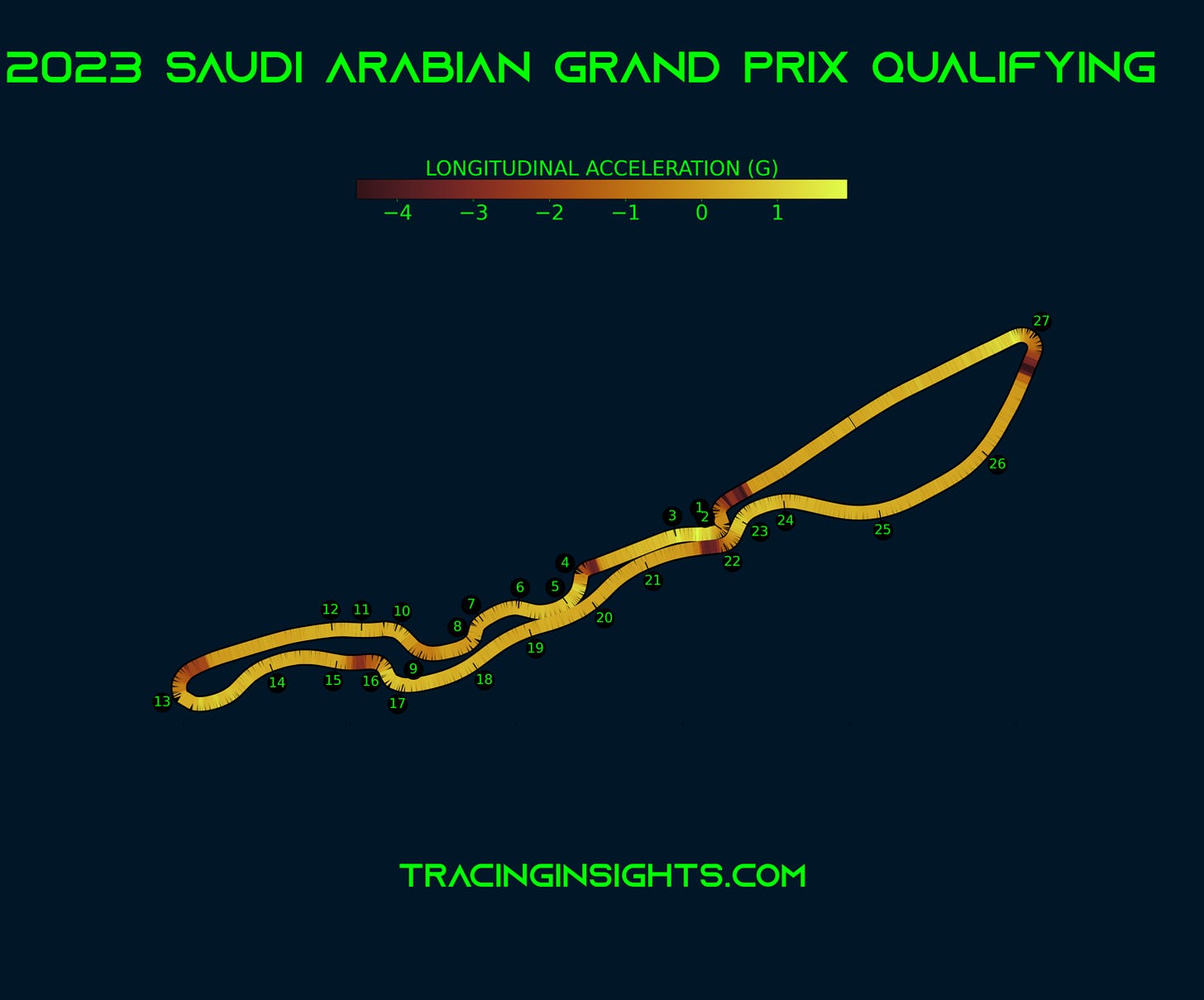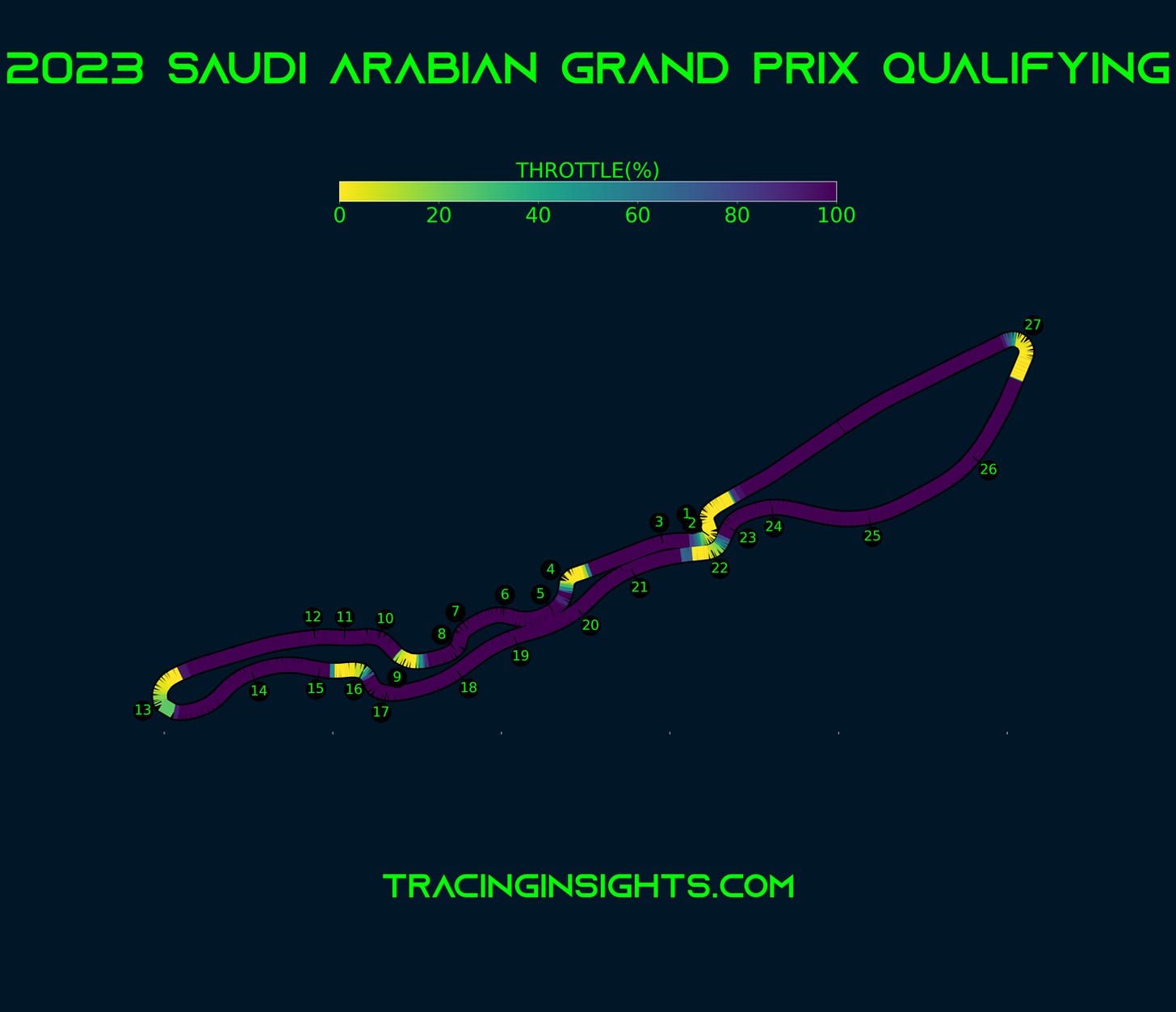Circuit Characteristics:
The Jeddah Corniche Circuit is unlike any other street circuit in Formula 1 history. It has the highest average speed of any street track, at around 250 km/h, and the second-highest of any circuit, only behind Monza. It also has the most corners of any track, with 27: 16 left and 11 right, but only seven of them require braking, as most of them are flat-out sweeps. The track is also very long, at 6.174 km, making it the second-longest on the calendar, after Spa-Francorchamps.

The track surface is expected to be smooth and low-grip, which will affect tyre wear and performance. The track also demands a lot of energy from the power units, especially the MGU-H and the hybrid system, which will have to cope with the high speeds and long straights. The track also features three DRS zones, which will create opportunities for overtaking, especially at the end of the final zone, where the slowest corner of the track awaits.

The Jeddah Corniche Circuit is a continuous sequence of corners, with hardly any straight sections where the drivers can relax. Even though some of them might not look like corners to the spectators, they still generate high G-forces and require precise steering inputs. This makes it a physically and mentally demanding circuit for the drivers, who will have to work hard on the wheel, use the switches, and communicate on the radio.

The car exhibits distinct characteristics in race configuration and in qualifying trim. The fuel load in the car influences the traction and the performance of the car in various ways. Some of the corners that are power-limited on a qualifying lap become grip-limited with a full load of fuel in the car.
Drivers spend over 70% of the lap at full throttle and the circuit is ranked third in terms of time spent, and distance covered, using this metric. This puts a lot of stress on the engine, gearbox and cooling systems, as well as on the fuel consumption. The teams have to find the optimal engine mode and fuel strategy to maximize performance without compromising reliability.


Turn 13 is a challenging corner with a steep 12% gradient and a banked curve that allows for multiple racing lines. The drivers have to balance their speed and angle carefully to optimize their exit onto the next sweeping, high-speed section
The quickest are Turns 20, 21, and 26 which are taken at close to or over 300 km/h.
The Jeddah circuit is also very sensitive to high-speed corner performance. This is where most of the lap time is gained or lost, as well as where most of the tyre wear occurs due to high lateral forces

Track Changes:
Several track changes were made for the 2023 race in order "to deliver smoother, safer, and even more exciting racing."
These included:
-
'Rumble Lines' - which cause traction to be lost and thus slowing cars down were added at Turns 3, 14, 19, 20, and 21.
-
Steel kerbs replaced bevelled kerbs at Turns 4, 8, 10, 11, 17, and 23.
-
Driver sightlines were improved with the fence wall moved back at Turns 14 and 20 by 7.5m and 5m respectively.
-
The fence wall at Turns 8 and 10 was also adjusted to improve visibility of the corner ahead.
Turns 22 and 23 were amended with the fence at Turn 23 adjusted and a bevelled kerb added - that helped reduce speeds by approximately 50 km/h

Tyre Selection and Strategy:
For the fourth edition of this race, Pirelli has selected its three mid-range compounds: the C2 as the Hard, the C3 as the Medium and the C4 as the Soft. This is a different choice from Bahrain, where the race was held last weekend. There, most drivers opted for a two-stop strategy, with some also considering a three-stop. Here in Jeddah, however, a one-stop strategy might be more feasible, with drivers switching between Medium and Hard depending on their starting positions.

As is usually the case at street circuits, track evolution will be very high and in qualifying, it will be crucial to choose exactly the right moment to go out on track to set a good lap time and also important will be getting the preparation lap just right. In past events here, we have even seen drivers doing two preparation laps to get the Softs to the right temperature and that can cause traffic related problems.
Overtaking Opportunity:
The slowest of those seven comers, Turn 1, comes right at the start of the lap on the back of a DRS zone on the start-finish straight, making it the best passing opportunity on the circuit. Qualifying is slightly more important in Jeddah than it was in Bahrain because it is difficult to overtake.
Key Statistics:
This is the fourth Saudi Arabian Grand Prix, there have been three different winners from the first three editions of the event - Lewis Hamilton, Max Verstappen, and Sergio Perez.
Being a street circuit, it has narrow margins for error and limited run-off areas. Any mistake or contact can result in damage or retirement, as well as triggering a safety car or a red flag. In fact, in the three previous races held in Saudi Arabia, there have been four safety car periods and two red flags.
